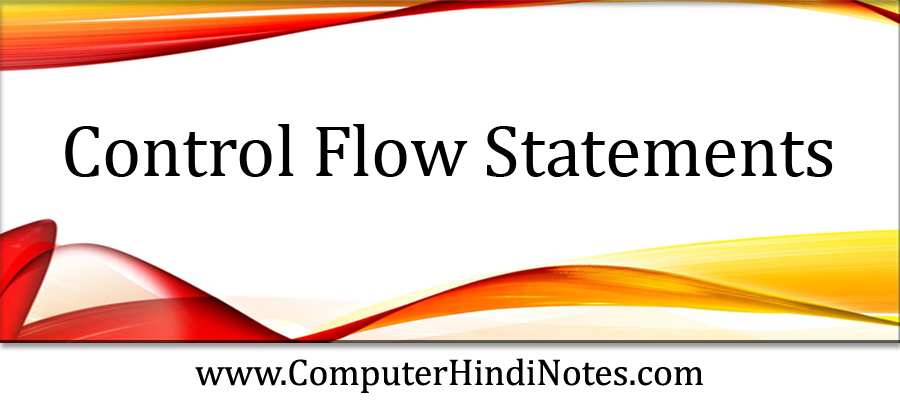इस पोस्ट में हम VB.Net में प्रयोग होने वाले Control Flow Statements के बारे में जानेगे |
Control Flow Statements
VB.Net मे control flow statements Program के flow को control करती है। यह प्रोग्राम मे प्रयोग होने वाले डेटा को control करती हैं। यह statements दो प्रकार की होती है।
- Conditional Statements
- Looping Statements

- Conditional Statements: VB.Net मे conditional statements का use conditions को check करने के लिए किया जाता है। यह मुख्यतः तीन प्रकार की होती है।
- If- Then
- If – Then – Else
- Select Case
If- Then
if-then statement का use normal conditions check करने के लिए किया जाता है। इसमे लिखी गई condition के true होने पर If- End If block की statements execute हो जाती है। और condition false होने पर control बाहर चला जाता है।
Syntax :
If Condition Then
Statements
End If
Example :
If a > b Then
Msgbox (“A is greater”)
End If
If- Then- Else
इस conditional statement मे दो block होते है। condition के true होने पर If block execute होता है और condition के false होने पर Else block execute होता है।
Syntax :
If Condition Then
[If block Statements]
Else
[Else Block Statements]
End If
Example :
If a > b Then
Msgbox (“A is greater”)
Else
Msgbox (“B is greater”)
End If
Select Case
Select Case statement का use किसी expression की value को अलग अलग cases पर check करने के लिए किया जाता है। इसमे select case मे लिखी गई expression की value cases के साथ match की जाती हैं और सही match found होने पर उस block की statement execute हो जाती है। किसी case के match न होने पर Case Else की statement execute होती है।
Syntax :
Select Case textexpression
Case ExpressionList………N
[‘Statements … … N]]
[Case Else
[Statement Else]]
End Select
Example :
Select Case Now.DayOfWeek
Case DayOfWeek.Sunday
MsgBox(“Its Time to Enjoy”)
Case DayOfWeek.Monday
MsgBox(“Have a nice week”)
Case Else
MsgBox(“Enjoy this week”)
End Select
Select Case






